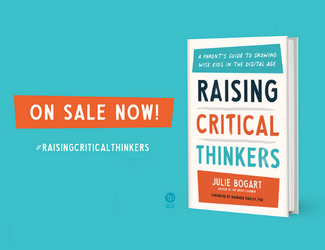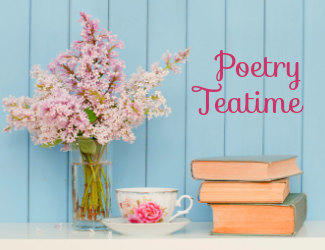We talked last time about the natural process of becoming a fluent writer. We discussed that there will be a time to teach your kids writing formats. In the professional writing world, we don’t talk about formats. We talk about genre and craft. Writing genres are the kinds of writing (fiction, magazine articles, editorials, journalism, children’s non-fiction, picture books, and so on). Craft is the study of what it takes to work in a particular genre. A writer will always be working on craft. Not every writer will work in every genre, however.
So let’s look at the natural development of format writing for your kids, what I’ll also call writing genres.
Most kids try out writing formats/genres long before you attempt to teach them. Parents often don’t recognize that this development is occurring! In fact, some (poor dears! It’s not their fault. They’re trying to be good parents…) thwart the attempts to use formats (genres) by invalidating the writing choices the kids make. They might think that the child’s fictional piece ought to have been a report, when in fact, this child is displaying knowledge of a writing genre and is testing it out! Let me give you a few examples.
-
Fiction
Without a doubt, fiction is the most popular format kids attempt on their own. Parents read to children from the time their kids can sit in a lap and then these same kids read to themselves once they’ve mastered enough skills to work through chapter books. Is it any wonder, then, that when kids do finally write something on their own, they turn to fiction? Dialogues, short stories, rewriting the ending of a favorite book, writing new episodes for a well-loved cast of characters (Star Wars and LOTR come to mind), writing about historical figures in a fictional setting… These are all fairly natural to kids. Usually the first format your kids discover on their own is fiction.They understand how to pace a story or they really latch onto detailed descriptions, or their dialog is snappy and realistic. I am continually amazed at the powers of children to write credible fiction.
Celebrate! Don’t worry that it’s not a dusty old report.
-
Advertisements
Any child who spends time listening to the radio or watching TV will develop an ear for what makes great ad copy. Kids learn this genre through modeling, not through a writing workbook that teaches them the elements of the advertisement. Usually they can write ads better than any other kind of writing. The fact that they can take their written language and arrange it to sound like an ad means they are using format writing. I repeat: mastering a format means that you are able to manipulate your written language so that it suits a well-known style of communication, a writing genre. Writing ad copy is extremely satisfying. Kids can tell if they’ve missed the mark or not, that’s how well they intuitively understand the demands of this format.
-
Humor
To write so that what is written is funny means that your child has internalized the elements of joke-telling. To bring a smile to the face of a reader is an art. Your kids may not be able to tell you how they do it, but they are following a recipe that they’ve absorbed from all the funny stuff they read and hear and are putting it into practice in their writing. Some kids are a joke a minute. They can’t help but spice up their writing with humor. It may be the first sign of a child who is learning a writing format. Your feedback is critical here: Don’t weed out the humor in your child’s writing! Praise it for the excellent understanding that it represents, taking their written self-expression to another level.
-
Paragraphs
Aha! Finally a real format. But wait. Don’t you have to teach the paragraph? Can kids really write them without being “taught” the “box analogy” (Top of the box is the organizing topic sentence, sides of the box are the support sentences, bottom of the box is the concluding idea that holds them all together)? Please don’t teach them “topic sentence, three supporting sentences, concluding sentence” method. It ruins their writing! Gone is their intuitive sense of timing, surprise and ingenuity. Kids’ paragraphs will read like “real paragraphs” if you leave them alone with only a few minor suggestions for organization.(Hint: The definition of an organized paragraph is: it makes sense.)
Your children may need some help learning when to indent in their writing, but the paragraph format is not unfamiliar to them. They naturally group their ideas into clusters (that’s what a paragraph is). This is why narrating and listening to your kids tell you what they know is so critical to writing. They are learning to group their ideas together and to sequence them as they talk with you. That comes before writing.
Narration helps your kids group their ideas and sequence them as they talk to you. It comes before writing.
Freewriting will also help them become more and more able to cluster their thoughts. Freewriting is often filled with “unindented” paragraphs. Your job is to help them notice when the idea shifted enough to warrant a new indentation.
Paragraphing is an art, not a science. Once you’ve pointed out the natural places for indentation, they will catch on and do it more and more themselves (if they aren’t already). The format called the paragraph is simply a visual cue to the reader that says “idea shift occurring.” The reader likes “breathers” on the page. The easiest way to give the reader some space without breaking the flow of the story is to paragraph (indent) as the ideas shift from one cluster to the next.
So look at all those formats your kids learn without any help from you. They always have room to grow in the craft of humor, fiction, ad copy and paragraphing. But the fact that they can write to a specific genre shows you that formats can be a part of the natural growth of a young writer. Formats aren’t just invented writing techniques that exist in a vacuum.
–julie
Learn more: Tools for Every Stage of Writing.
Image by Caitlin Regan (cc cropped, text added)


















